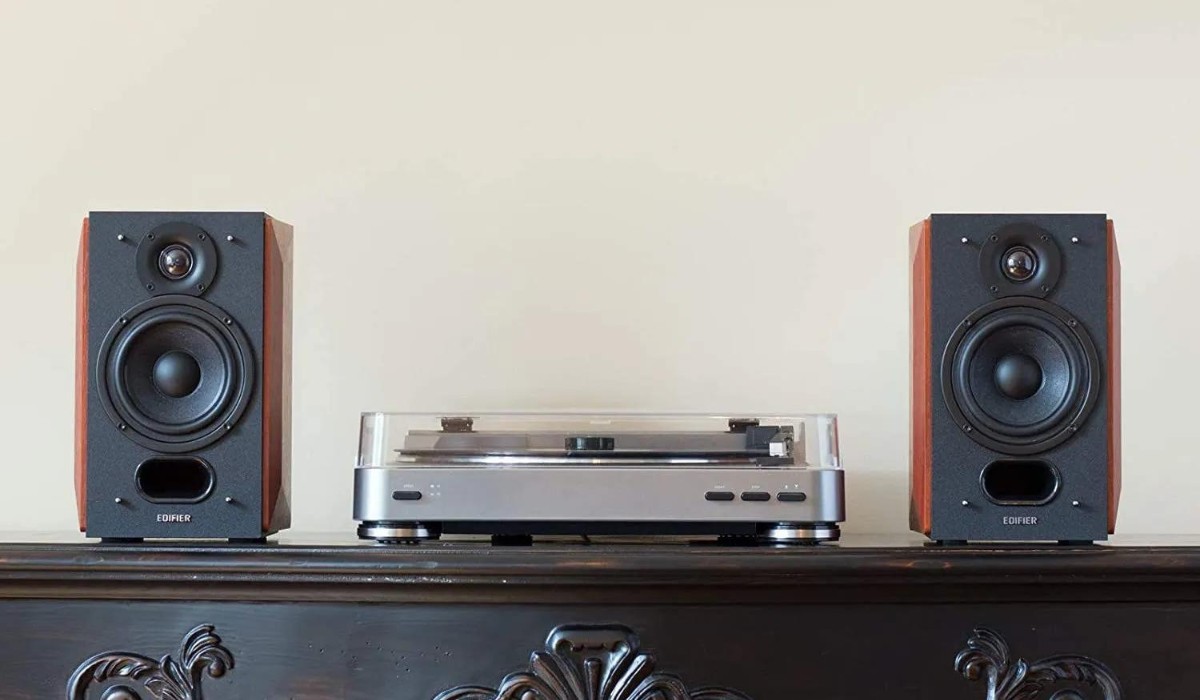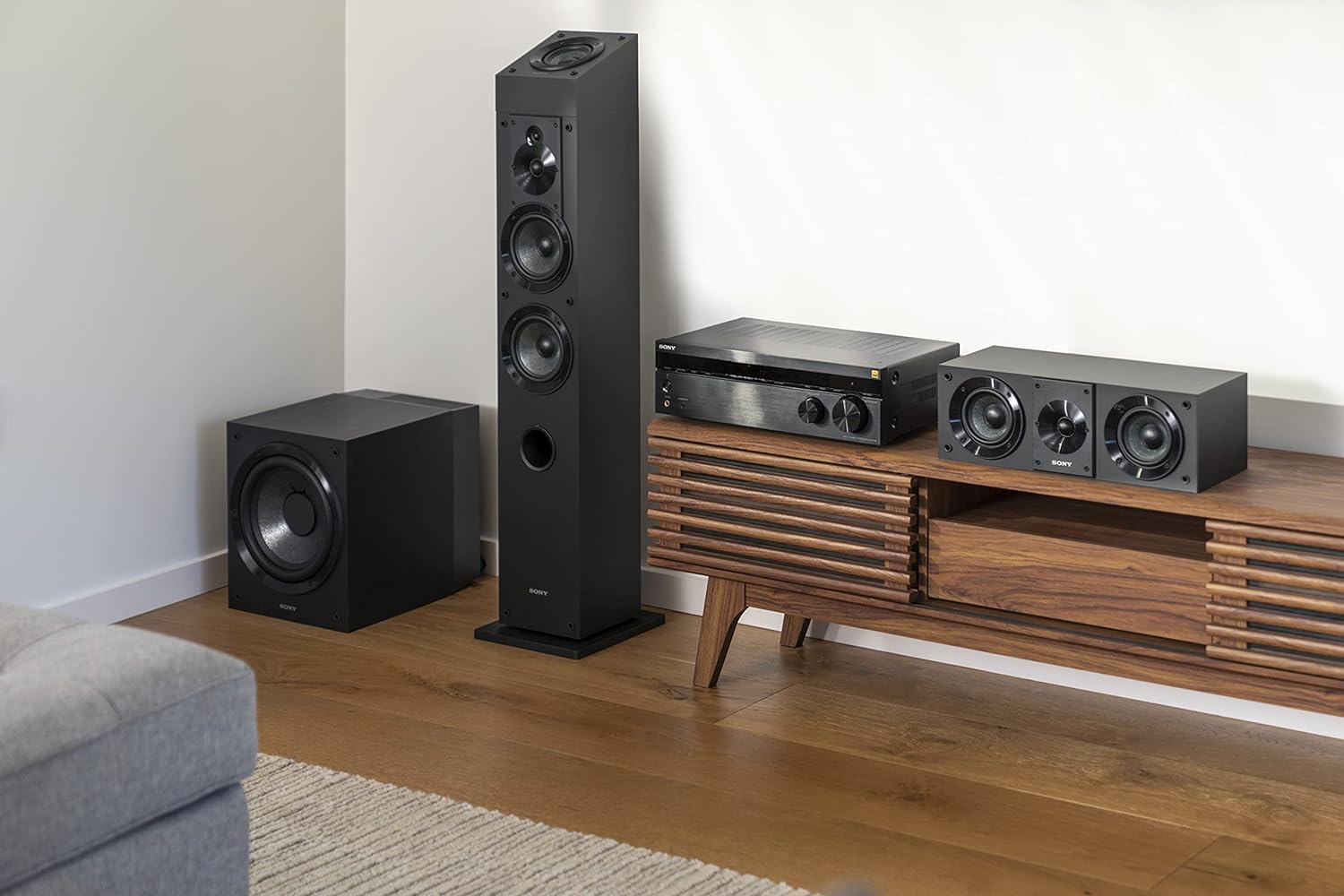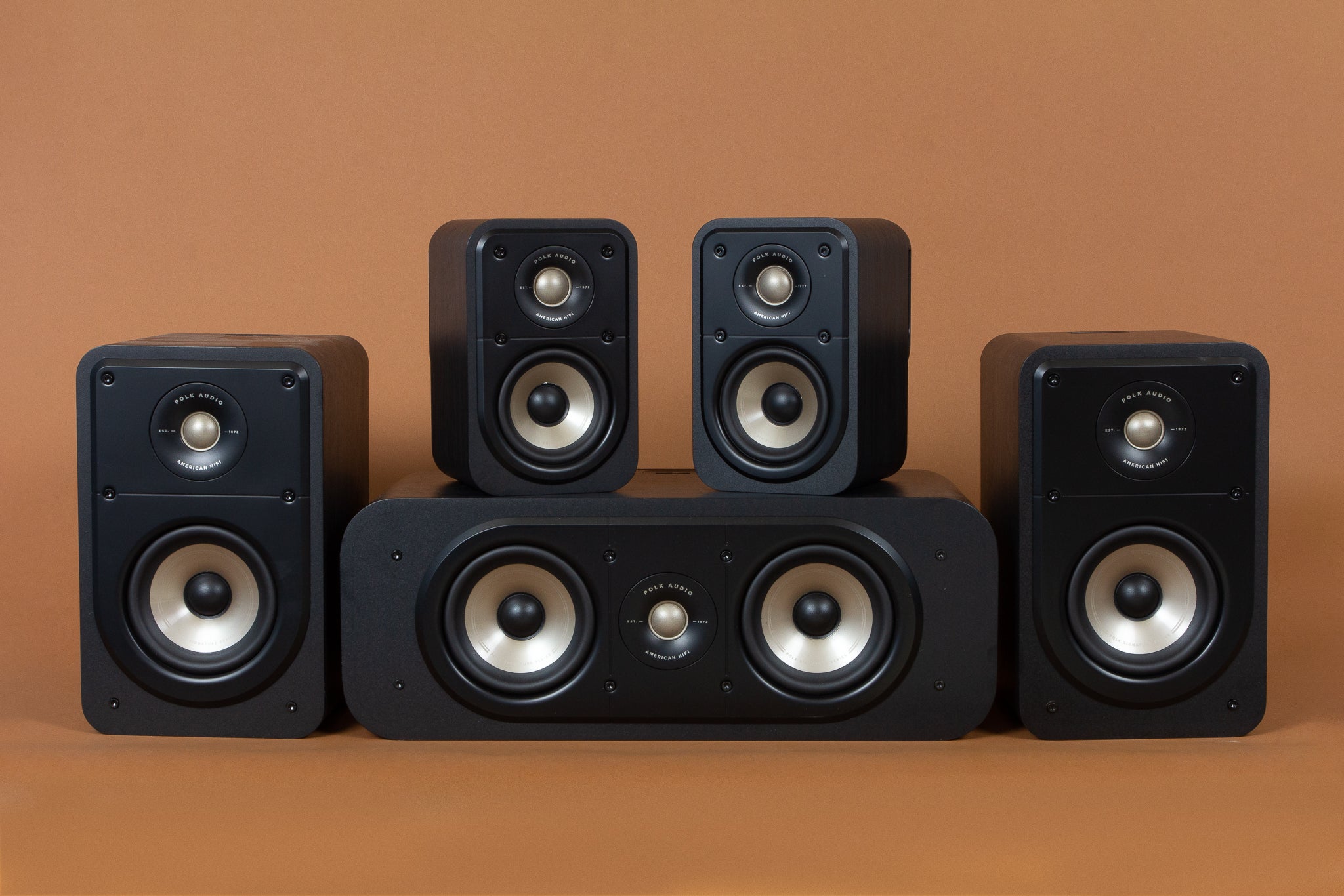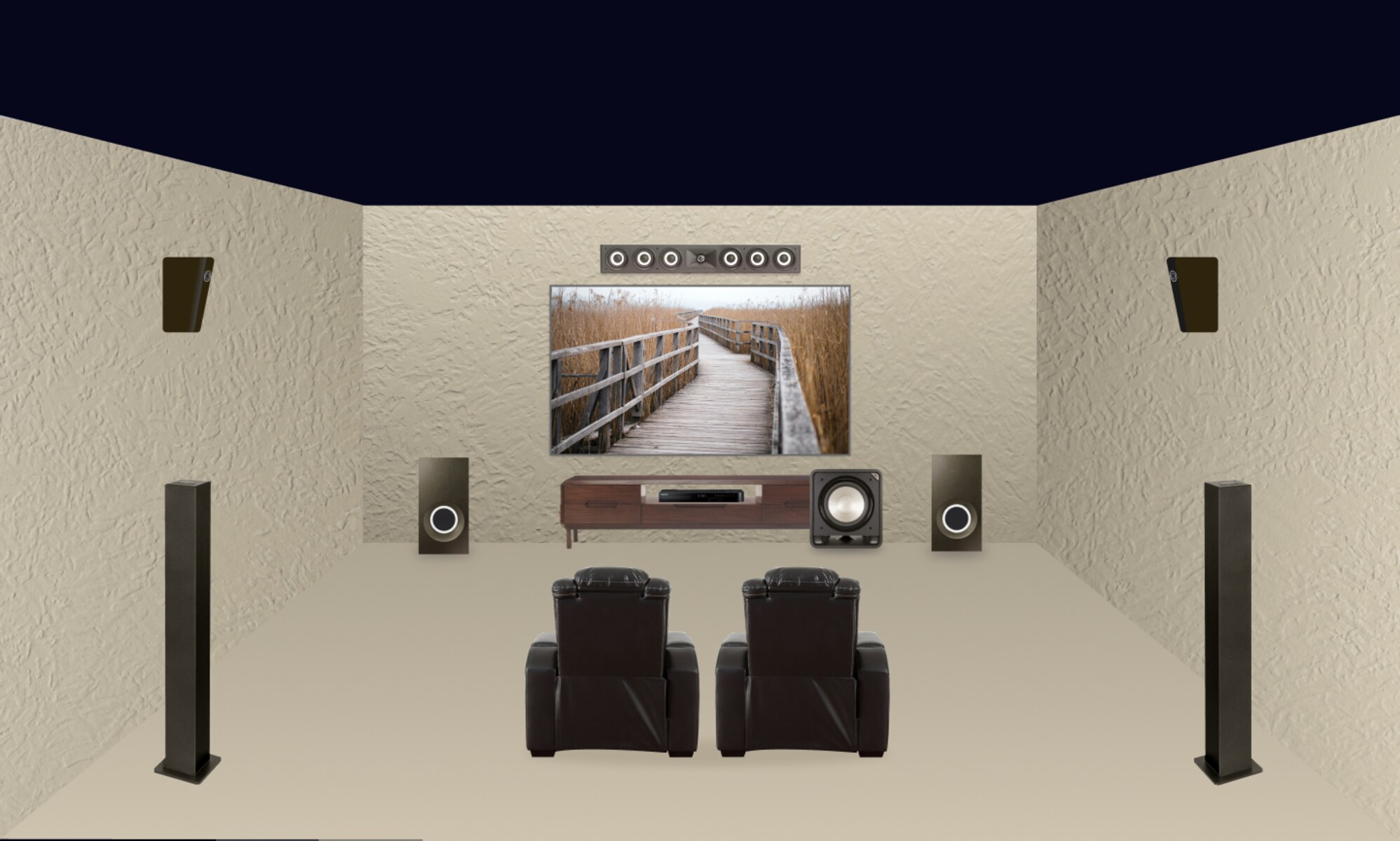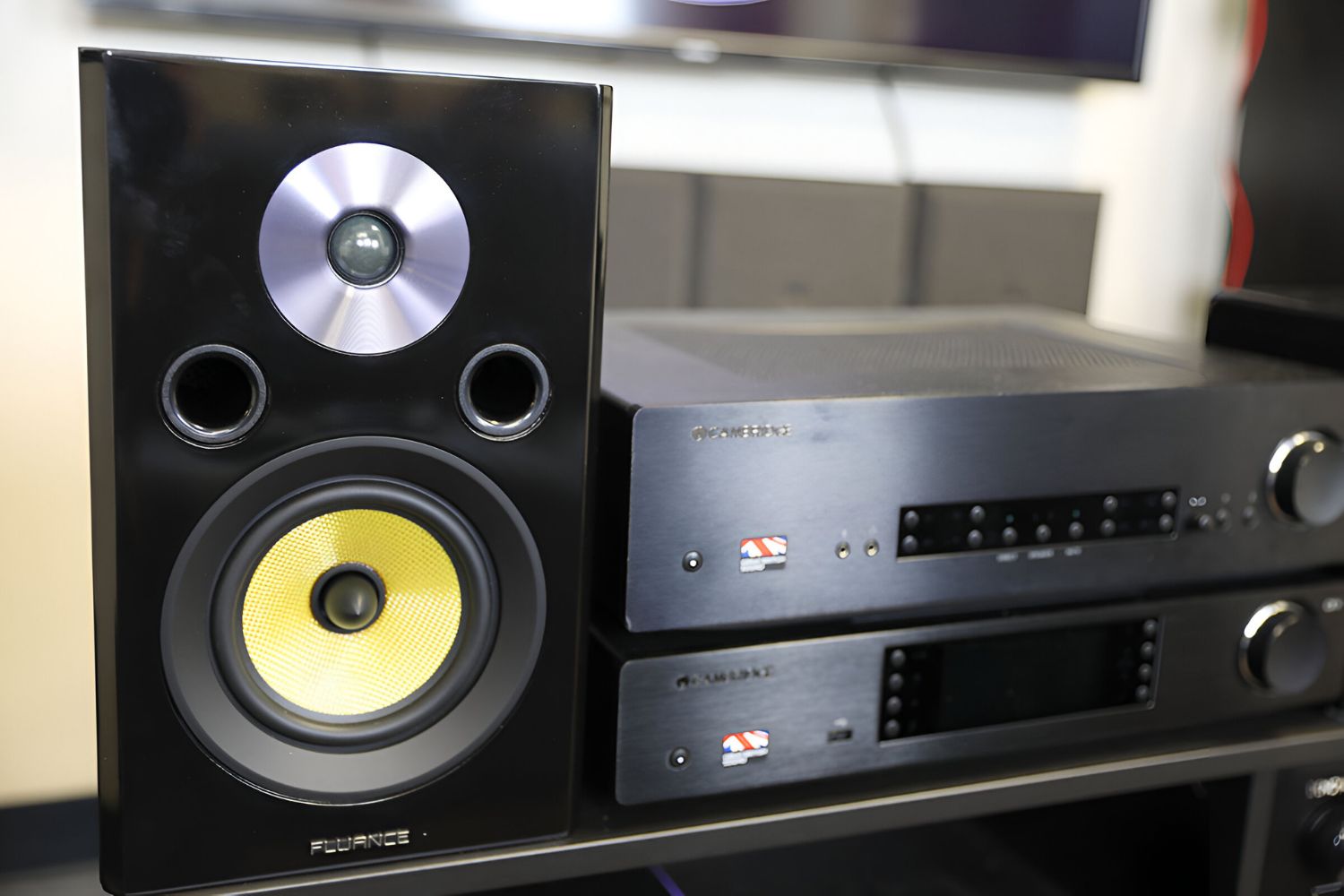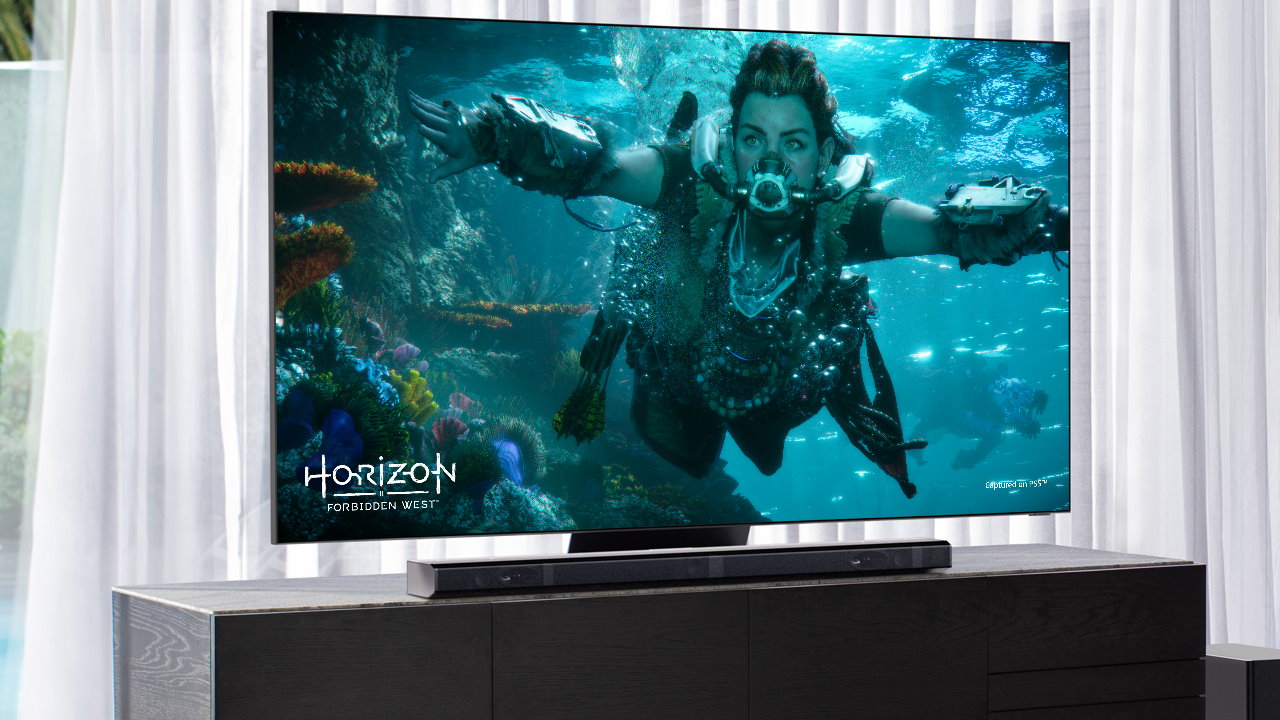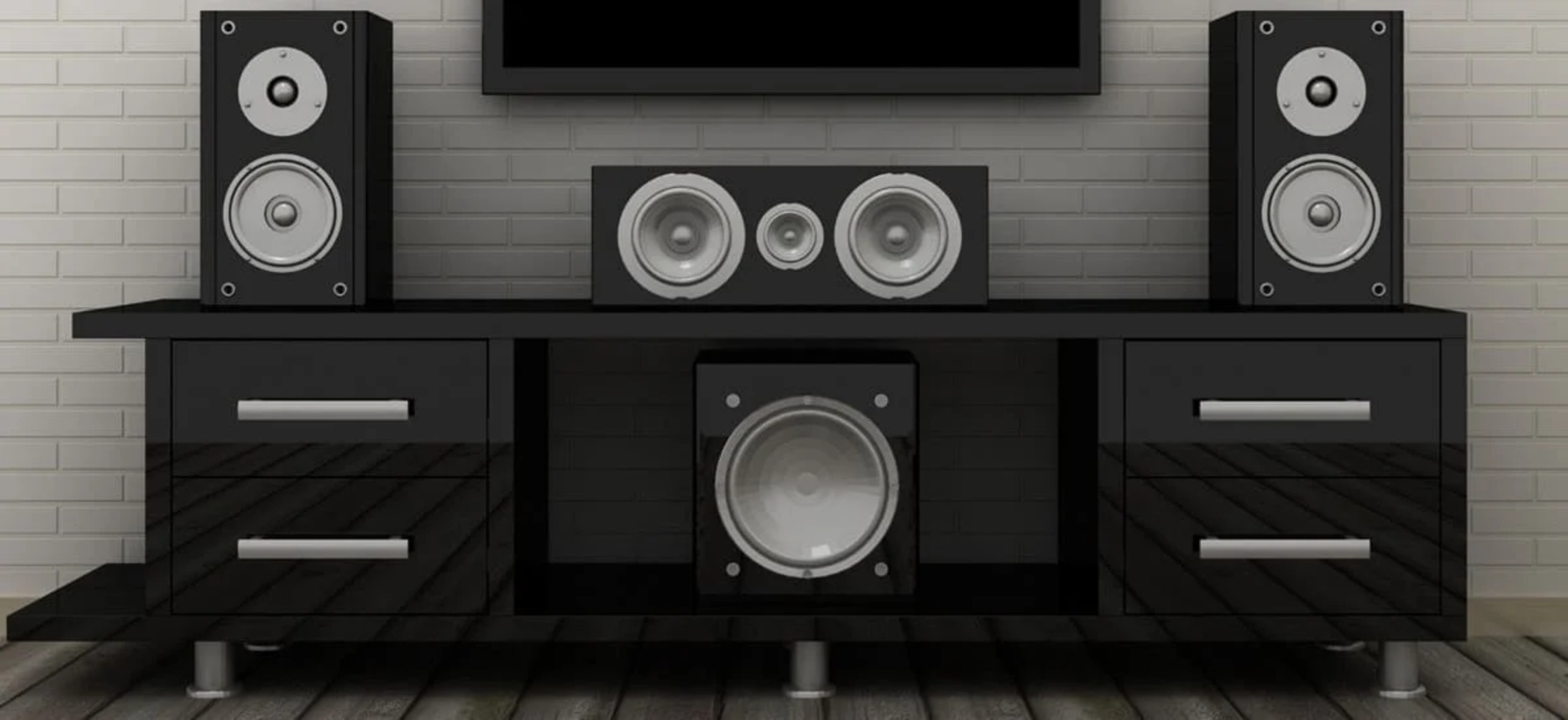Introduction
When it comes to creating a captivating home audio experience, connecting bookshelf speakers to an AV receiver is a key step. Bookshelf speakers are prized for their compact size and impressive sound quality, making them an excellent choice for home audio setups. An AV receiver acts as the central hub for audio and video equipment, providing power and processing for the connected speakers. By understanding how to properly connect and configure bookshelf speakers with an AV receiver, enthusiasts can unlock the full potential of their audio system.
In this comprehensive guide, we will delve into the intricacies of setting up bookshelf speakers with an AV receiver, covering everything from the fundamental principles to the practical steps involved. Whether you are a seasoned audiophile or a newcomer to the world of home audio, this guide will equip you with the knowledge and confidence to seamlessly integrate bookshelf speakers into your AV setup.
Throughout this guide, we will explore the nuances of AV receivers and bookshelf speakers, offering insights into their functionalities and compatibility. We will then proceed to the practical aspects of connecting the speakers to the receiver, ensuring that each step is clear and actionable. Additionally, we will address the crucial process of setting up and configuring the AV receiver to optimize the audio output. Finally, we will discuss testing and troubleshooting techniques to ensure that the system is functioning at its best.
By the end of this guide, you will have a comprehensive understanding of how to connect and configure bookshelf speakers with an AV receiver, empowering you to elevate your home audio experience to new heights. Let's embark on this journey to unlock the full potential of your audio system.
Understanding AV Receivers and Bookshelf Speakers
Before delving into the practical aspects of connecting bookshelf speakers to an AV receiver, it’s essential to grasp the fundamental functionalities of these two key components of a home audio system.
AV Receivers:
- AV receivers, short for audio-video receivers, serve as the central hub for audio and video equipment in a home entertainment setup. They are equipped with multiple audio and video inputs, allowing users to connect various devices such as Blu-ray players, gaming consoles, media players, and cable boxes.
- One of the primary functions of an AV receiver is to amplify and process audio signals from connected devices before sending them to the speakers. This amplification process is crucial for powering the speakers and delivering high-quality sound output.
- AV receivers also support surround sound formats, enabling immersive audio experiences for movies, music, and gaming. They often come with built-in decoders for formats such as Dolby Atmos, DTS:X, and more, enhancing the spatial audio performance.
- Additionally, modern AV receivers are equipped with networking capabilities, allowing for wireless streaming from mobile devices, access to online music services, and integration with smart home ecosystems.
Bookshelf Speakers:
- Bookshelf speakers are compact, versatile audio devices designed to deliver high-fidelity sound in a relatively small form factor. They are commonly placed on bookshelves, stands, or mounted on walls, making them ideal for smaller rooms or as part of a larger multi-speaker setup.
- Despite their compact size, bookshelf speakers are engineered to produce impressive audio performance, often rivaling larger floor-standing speakers. They typically feature a woofer for low and mid-range frequencies, a tweeter for high frequencies, and sometimes a dedicated mid-range driver for enhanced clarity.
- Bookshelf speakers are known for their accuracy and imaging, providing a well-defined soundstage and precise audio localization. This makes them suitable for critical listening, home theater setups, and as part of a stereo or multi-channel audio configuration.
- These speakers can be paired with a subwoofer to enhance the low-frequency response, creating a more robust and full-bodied sound when used in home theater applications.
By understanding the capabilities and characteristics of AV receivers and bookshelf speakers, enthusiasts can make informed decisions when selecting, connecting, and configuring these components for their home audio systems. With this knowledge in mind, let’s proceed to the practical steps of connecting bookshelf speakers to an AV receiver.
Connecting Bookshelf Speakers to an AV Receiver
Once you have a clear understanding of the capabilities of AV receivers and bookshelf speakers, the next step is to establish the physical connection between these two essential components. Properly connecting bookshelf speakers to an AV receiver is crucial for ensuring optimal audio performance and seamless integration within your home entertainment setup.
Here’s a step-by-step guide to connecting bookshelf speakers to an AV receiver:
- Identify the Speaker Outputs: On the back of the AV receiver, locate the speaker outputs. These are typically labeled as “Front,” “Rear,” or “Main” speakers. Each channel will be designated for a specific set of speakers, such as the front left and right speakers, rear surround speakers, and so on.
- Match the Channels: Ensure that you match the appropriate channels on the AV receiver with the corresponding inputs on the bookshelf speakers. For example, the left speaker should be connected to the left channel output on the receiver, and the right speaker to the right channel output.
- Speaker Wire Connection: Use high-quality speaker wire to connect the AV receiver to the bookshelf speakers. For each speaker, strip a small portion of the wire insulation to expose the bare wire. Then, insert the bare wire into the corresponding speaker terminals on the back of the AV receiver, ensuring a secure connection. Repeat this process for the bookshelf speakers, connecting the other end of the wire to their input terminals.
- Polarity Check: It’s essential to maintain the correct polarity when connecting the speaker wires. The positive terminal on the AV receiver should be connected to the corresponding positive terminal on the speaker, and the same applies to the negative terminals. Maintaining proper polarity ensures that the speakers are in phase, resulting in coherent and accurate sound reproduction.
- Secure Connections: Double-check all connections to ensure they are secure and free from any loose strands of wire that could cause a short circuit. Properly secured connections are essential for reliable performance and safety.
By following these steps, you can effectively connect your bookshelf speakers to the AV receiver, laying the foundation for an immersive and high-fidelity audio experience. Once the physical connections are established, the next phase involves setting up and configuring the AV receiver to optimize the audio output, which we will explore in the following section.
Setting Up and Configuring the AV Receiver
After successfully connecting the bookshelf speakers to the AV receiver, the next crucial step is to set up and configure the receiver to deliver optimal audio performance. The configuration process involves adjusting various settings and parameters to ensure that the receiver effectively powers and processes the audio signals, delivering an immersive and balanced sound experience.
Here are the essential steps for setting up and configuring an AV receiver:
- Speaker Configuration: Access the receiver’s menu or settings interface to configure the speaker setup. This includes specifying the size of the connected speakers (bookshelf, floor-standing, or satellite), setting the crossover frequency to redirect bass frequencies to a subwoofer if available, and indicating the number of speakers in the system (2.0, 2.1, 5.1, 7.1, etc.).
- Room Calibration: Many modern AV receivers come equipped with room calibration systems, such as Audyssey, MCACC, or YPAO. Utilize the included microphone to measure the acoustic characteristics of the room and automatically adjust the speaker settings, equalization, and delays to optimize the audio performance based on the room’s acoustics.
- Audio Decoding and Processing: Configure the receiver to decode and process various audio formats based on your media sources. This includes selecting the appropriate surround sound mode for movies, music, and gaming, as well as enabling features such as Dolby Atmos, DTS:X, and other immersive audio technologies if supported by the receiver.
- Input Assignments: Assign input sources to specific audio and video inputs on the receiver. This ensures that the correct audio signal is routed to the corresponding speakers when switching between devices such as Blu-ray players, gaming consoles, media players, and more.
- Network and Streaming Setup: If the AV receiver supports network connectivity and wireless streaming, configure the network settings, including Wi-Fi setup, firmware updates, and access to streaming services such as Spotify, TIDAL, or Pandora. This enables seamless access to online music content and integration with other smart devices in the home network.
By meticulously setting up and configuring the AV receiver, users can unleash the full potential of their bookshelf speakers, creating an audio environment that is tailored to their preferences and the acoustic characteristics of the listening space. With the receiver optimized for performance, the next step involves testing the system and addressing any potential issues, which we will explore in the following section.
Testing and Troubleshooting
Once the bookshelf speakers are connected to the AV receiver and the system is configured, it’s essential to conduct thorough testing to ensure that everything is functioning as intended. Testing allows users to verify the audio performance, speaker functionality, and overall integration with the AV receiver. Additionally, troubleshooting any potential issues that may arise during the testing phase is crucial for achieving a seamless and immersive audio experience.
Here are the key steps for testing and troubleshooting the connected bookshelf speakers and AV receiver:
- Audio Playback Test: Play various types of audio content, including music, movie soundtracks, and gaming audio, to evaluate the performance of the bookshelf speakers. Listen for clarity, balance, and spatial imaging to ensure that the speakers are delivering accurate and immersive sound reproduction.
- Channel Identification: Verify that each speaker is correctly assigned to its corresponding channel on the AV receiver. This can be done by playing test tones or using audio setup features included in the receiver’s menu to confirm that sound is emanating from the correct speakers in the intended locations.
- Bass Management and Subwoofer Integration: If a subwoofer is part of the audio setup, ensure that the low-frequency effects are seamlessly integrated with the bookshelf speakers. Adjust the crossover frequency and subwoofer volume to achieve a balanced and cohesive bass response that complements the overall audio output.
- Room Acoustics Evaluation: Assess the impact of the room’s acoustics on the audio performance. Listen for any potential acoustic issues such as reflections, standing waves, or uneven frequency response. Addressing these issues may involve acoustic treatments, speaker placement adjustments, or utilizing the room calibration features of the AV receiver.
- Troubleshooting Common Issues: If any issues arise during testing, such as audio dropouts, distortion, or connectivity problems, troubleshoot the potential causes. This may involve checking the speaker wire connections, verifying the receiver settings, and ensuring that all components are receiving adequate power and ventilation.
Thorough testing and proactive troubleshooting are essential for fine-tuning the audio system, addressing any potential issues, and optimizing the overall performance of the connected bookshelf speakers and AV receiver. By conducting these tests and troubleshooting steps, enthusiasts can ensure that their home audio setup delivers the immersive and high-fidelity experience they desire.
Conclusion
Embarking on the journey of connecting and configuring bookshelf speakers with an AV receiver is a rewarding endeavor that culminates in a captivating home audio experience. By understanding the intricacies of AV receivers and bookshelf speakers, enthusiasts gain valuable insights into the capabilities and functionalities of these essential components. The process of physically connecting the speakers to the receiver, followed by the meticulous setup and configuration of the receiver, lays the foundation for an immersive and balanced sound environment.
Throughout this guide, we have explored the step-by-step process of connecting bookshelf speakers to an AV receiver, emphasizing the importance of secure connections, proper polarity, and meticulous attention to detail. Additionally, we delved into the critical aspects of setting up and configuring the AV receiver, highlighting the significance of speaker configuration, room calibration, audio processing, and network integration.
Furthermore, the testing and troubleshooting phase ensures that the integrated audio system functions seamlessly, delivering high-fidelity sound reproduction while addressing any potential issues that may arise during the setup process. Thorough testing allows users to evaluate the performance of the bookshelf speakers, verify channel assignments, integrate subwoofers, assess room acoustics, and troubleshoot common audio system issues.
By following this comprehensive guide, audio enthusiasts and home entertainment aficionados can elevate their audio experiences, unlocking the full potential of their bookshelf speakers and AV receivers. Whether immersing in cinematic soundscapes, enjoying music with unparalleled clarity, or experiencing immersive gaming audio, a well-connected and configured audio system enriches the home entertainment environment.
As you apply the knowledge and insights gained from this guide, you are poised to create a captivating and personalized audio environment that resonates with your preferences and elevates your home entertainment experiences. The journey of connecting bookshelf speakers to an AV receiver is not only a technical endeavor but also a creative pursuit, allowing you to tailor the audio landscape to suit your unique listening preferences and the acoustic characteristics of your living space.
With a firm understanding of AV receivers, bookshelf speakers, and the intricacies of their integration, you are well-equipped to embark on this transformative journey, where audio excellence meets seamless integration, resulting in a home audio experience that is truly exceptional.







